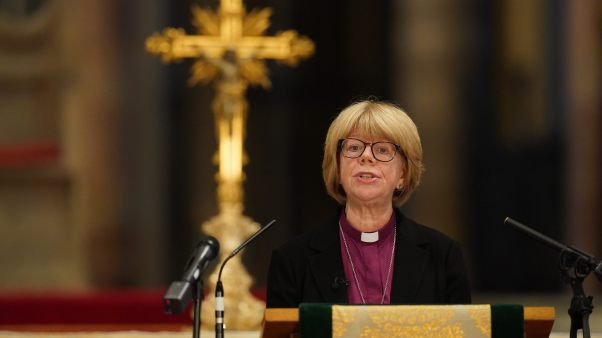Medieval society so valued constant prayer that many people made substantial donations to monasteries so that monks and nuns, largely freed from manual labor, could become “professional” pray-ers on behalf of the rest of society. In fact, many monks and nuns, in obedience to Paul’s command to “pray without ceasing,” lived an institutional life of prayer, praying day and night.
If the chief monastic activity was prayer, what would be better suited than the Jewish-Christian prayer book, the Psalms? Most Benedictine monks and nuns chanted all 150 psalms once a week in a cycle of seven daily “hours.” Thus the first thing required of new monks or nuns was learning to read, if they did not already know how to. Second, they had to memorize the Psalms, which might take anywhere from six months to two years. The Rule of the Master, a forerunner of Benedict’s Rule, says that monks traveling on monastery business should take with them wax tablets covered with Psalms to memorize.
Bible Immersion
The Scripture-saturated life of a medieval monk is evident in the spiritual writings monks and nuns left behind. The works of Gregory the Great, Julian of Norwich, and Bernard of Clairvaux, to name three, are at many places nothing but a web of Scripture quotations and allusions.
For example, the following passage from Bernard’s On Loving God, which is typical, contains at least 12 biblical quotations or allusions:
“The faithful … know how totally they need Jesus and him crucified [1 Cor. 2:2]. While they admire and embrace in him the charity that surpasses all knowledge [Eph. 3:19], they are ashamed at failing to give what little they have in return for so great a love and honor. Easily they love more who realize they are loved more: ‘He loves less to whom less is given’ [Luke 7:43, 47; cf. 12:48]. Indeed, the Jew and pagan are not spurred on by such a wound of love as the church experiences, who says, ‘I am wounded by love’ [Song of Sol. 2:5, Old Latin version, cf. 4:9], and again, ‘Cushion me about with flowers, pile up apples around me, for I languish with love’ ” [Song of Sol. 2:5, Vulgate].
“The church sees King Solomon with the diadem his mother had placed on his head [Song of Sol. 3:11, cf. 1 Kings 1]. She sees the Father’s only Son carrying his cross [John 19:17, 25], the Lord of majesty [1 Cor. 2:8, Old Latin version], slapped and covered with spittle; she sees the Author of life and glory [Acts 3:15] pierced by nails, wounded by a lance [John 19:34, 25], saturated with abuse [Lam. 3:30], and finally laying down his precious life for his friends [Jer. 12:7, John 15:13].”
Not every medieval monk or nun was so immersed in Scripture, and there were periods when the Bible was neglected, but many monks and nuns were so steeped in the Bible, they could hardly express themselves without quoting it.
Dennis Martin teaches at Loyola University, Chicago
Copyright © 1996 by the author or Christianity Today/Christian History magazine.Click here for reprint information on Christian History.










